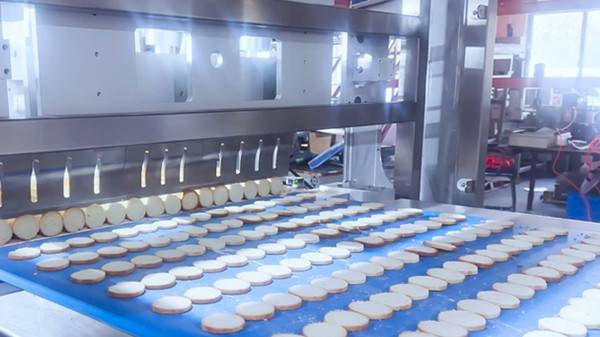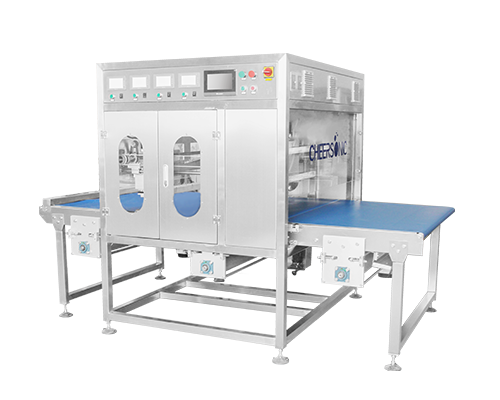Common Problems and Solutions for Biscuit Making
1. Dough preparation
- Dough is too hard or too soft
Problem: The dough is too hard to handle, and the dough is too soft and sticky.Cause: The different water absorption of flour leads to the difference in dryness and humidity of the dough; the butter is not softened enough or too much; the amount of water added is inappropriate.
Solution: Adjust the amount of water added according to the water absorption of flour; ensure that the butter is softened to a moderate degree to avoid being too hard or too soft; if the dough is too hard, add warm water appropriately; if the dough is too soft, add an appropriate amount of flour to adjust. - Oil-water separation
Problem: Oil-water separation occurs between the butter and the egg liquid, and the dough cannot be mixed evenly.
Cause: The temperature of the butter is too low or too high; the temperature of the egg liquid is too low; the mixing is uneven.
Solution: Ensure that the temperature of the butter and the egg liquid is similar and kept at around 20℃; use a whisk to fully mix the butter and egg liquid; if oil-water separation occurs, add a spoonful of flour to help mix. - Unformed
Problem: The frozen biscuit dough becomes loose after being taken out of the refrigerator.Reason: The temperature is too low, the dough is too hard, lacks elasticity, and is easy to break.
Solution: After the frozen dough is taken out of the refrigerator, it is placed at room temperature. The criterion for judging the placement time is whether it is very difficult to cut it with one knife. If tough ingredients such as nuts and dried fruits are added, avoid the dough being too soft. Before adding tough ingredients, try to cut them smaller or soak the dried fruits in water or rum for 1 hour, drain the surface moisture before using. - The appropriate state of dough whipping
The purpose of whipping butter is to wrap air in the butter through continuous whipping, which can make the biscuits crisper. The degree of whipping of butter is also different when making different biscuits. Some biscuits do not need to be whipped, as long as they are whipped until the volume is slightly expanded and relatively light and fluffy; cookies need to be whipped, and the butter paste is required to be whipped until the color turns white, the volume is more expanded, and it is feathery; some biscuits do not need to be whipped butter, as long as they are whipped evenly.
2. During baking
- Biscuits do not color
Reason: The sugar content in the recipe is too low.
Solution: Increase the content of invert sugar or sugar. - Uneven coloring of biscuits
Reason: Uneven oven temperature; inconsistent biscuit thickness; improper baking tray position.
Solution: Use the hot air circulation function of the oven, or turn the baking tray in the middle to ensure that the biscuits are evenly colored; control the thickness of the biscuits to avoid uneven thickness; place the baking tray in the middle of the oven to ensure uniform heating. - Biscuits stick to the bottom
Reason: The biscuits are too loose and have poor internal bonding; the biscuits cool down too long in the back area of the oven, and the biscuit blanks become hard.
Solution: Reduce the amount of leavening agent; avoid too large a temperature difference between the back and middle areas of the oven, and the cooling time in the back area should not be too long. - Concave bottom of biscuits
Reason: The biscuits are not expanded enough; there are too few pinholes on the biscuits; the dough is too elastic.
Solution: Increase the amount of leavening agent, especially baking soda; increase the number of pins on the biscuit mold; appropriately increase the amount of dough improver or increase the mixing time, and add an appropriate amount of starch (5%-10% of flour) to dilute the gluten. - Biscuits shrink and deform
Reason: The dough belt is too tight during rolling and transportation; the dough is too elastic.
Solution: Adjust the dough belt so that it has a certain droop when passing through the second and third pairs of rollers. The canvas belt should keep the dough belt in a relaxed state when transporting the dough belt; appropriately increase the amount of dough improver or increase the mixing time, and add an appropriate amount of starch (5%-10% of flour) to dilute the gluten. - Biscuits blister
Reason: The temperature in the front area of the oven is too high; the dough is too elastic, and the gluten blocks the gas channel during baking and is not easy to disperse, causing blistering on the surface; the leavening agent is agglomerated and not opened; too much flour is sprinkled on the dough belt during rolling.
Solution: Control the oven temperature, the dough fire temperature should be gradually increased; reduce the elasticity of the dough, and use a mold with more needles; pay attention to crushing the agglomerated leavening agent before use; try to avoid sprinkling or sprinkle less powder.
3. Follow-up of baking
- Biscuits become soft and not crispy after cooling
Reason: too much moisture inside the biscuits; the biscuits are thick and the oven temperature is too high, the baking time is short, resulting in burnt skin and raw inside, too much residual moisture inside; the exhaust pipe in the middle and rear section of the oven is blocked, the exhaust is not smooth, resulting in too high temperature in the oven; improper storage, absorbing moisture in the air.
Solution: Ensure that the baking time and temperature are sufficient to dry the moisture inside the biscuits; control the thickness of the biscuits, appropriately lower the oven temperature, increase the baking time, and make the moisture content of the finished biscuits < 6%; keep the exhaust unobstructed, and keep the exhaust pipe insulated so that the outlet temperature is not lower than 100℃ to avoid condensed water backflow; put it in a sealed box in time after cooling to avoid absorbing moisture in the air. If it has become soft due to moisture, it can be put in the oven and re-baked for a few minutes to restore the crisp taste. - Biscuits are fragile
Reason: The biscuits are over-expanded and too loose; too much starch is used in the ingredients.
Solution: Reduce the amount of leavening agent; appropriately reduce the amount of starch. - Cracks in biscuits
Reason: The biscuits cool too quickly after being baked, and the strong heat exchange and water volatilization cause additional stress inside the biscuits and cracks; it is related to the amount of gluten formation, the amount of water added, the proportion of certain raw materials and auxiliary materials in the formula, the baking temperature, the shape of the biscuits, the direction of the pattern, the thickness, the intersection of the curves and the layout of the pattern.
Solution: Avoid cooling too quickly. If necessary, add a cover to the cooling conveyor belt. If conditions permit, use temperature and humidity control equipment; according to the specific reasons for the cracks, improve the formula, adjust the oven temperature, biscuit mold, etc. - The biscuits are dull and the surface is rough
Reason: The amount of oil sprayed on the biscuits is too small, or the oil spraying temperature is too low, so that the oil mist is difficult to produce, the spraying is uneven, and the oil is not easy to enter the biscuit surface, affecting the gloss of the biscuits; there is no starch in the formula or the amount of starch is too little; the mixing time is insufficient or excessive; too much powder is sprinkled on the surface of the dough belt.
Solution: Increase the amount of oil spray, control the oil temperature at 85℃-90℃, and add an appropriate amount of brightener and chili red to the oil; add an appropriate amount of starch, and if necessary, install steam equipment in the front of the oven to increase the humidity in the oven so that the surface of the biscuit can absorb more water to promote starch gelatinization and increase the surface gloss; pay attention to the mixing time; try not to sprinkle or sprinkle less flour. - The biscuits have a rough taste
Reason: Insufficient or excessive mixing time; too little or too much leavening agent in the formula; too little oil and sugar in the formula.
Solution: Correctly and timely judge the maturity of the mixing; add leavening agent in an appropriate amount; appropriately increase the amount of oil, sugar or lecithin.
UFM2300 Ultrasonic Cake Bars Cutting Machine, this is a custom machine designed for continuous supplied product to cut cake bars and loaf products into slices. The machine can be configured to cut from 1-10 loaves side by side automatically depending on width of product. The blade frame can be fitted with 4 ultrasonic blade system to cut fresh and sticky products. This machine has high cutting efficiency and can cut products up to 1 meter wide and can produce 1200 Loaves per hour.
- Average speed: about 600-1200 products per hour
- Friendly and easy operation
- Reliable and durable ultrasonic machine
- Increased quality and labor saving enhance capacity
- Improved portion quality and consistency
About Cheersonic
Cheersonic manufactures the leading portioning equipment for bakeries producing fresh and frozen desserts. Since 1998 bakers have used Cheersonic machines to cut, slice and portion cheesecake, pie, layer cake, loaves, butter, cheese, pizza, sandwichs, and more. Cheersonic offers ultrasonic cutting solutions that support start-up bakeries and high production commercial facilities alike. Small standalone machines can be used in manual baking facilities and large inline robotic solutions aid in high speed production.
Cheersonic offers many ultrasonic slicing models, both inline and offline applications, with production speeds of 80 to 1,500 cakes or pies per hour.
Cheersonic’ latest offline introductions include ultrasonic cutting with or without divider inserts between each slice. This improves the quality of the cut and makes for a much better product presentation for the customer. In addition, robotic arm improves the speed, efficiency, and accuracy of the cutting process, producing professional looking products every time.
Chinese Website: Cheersonic Provides Professional Ultrasonic Cutting Solutions



